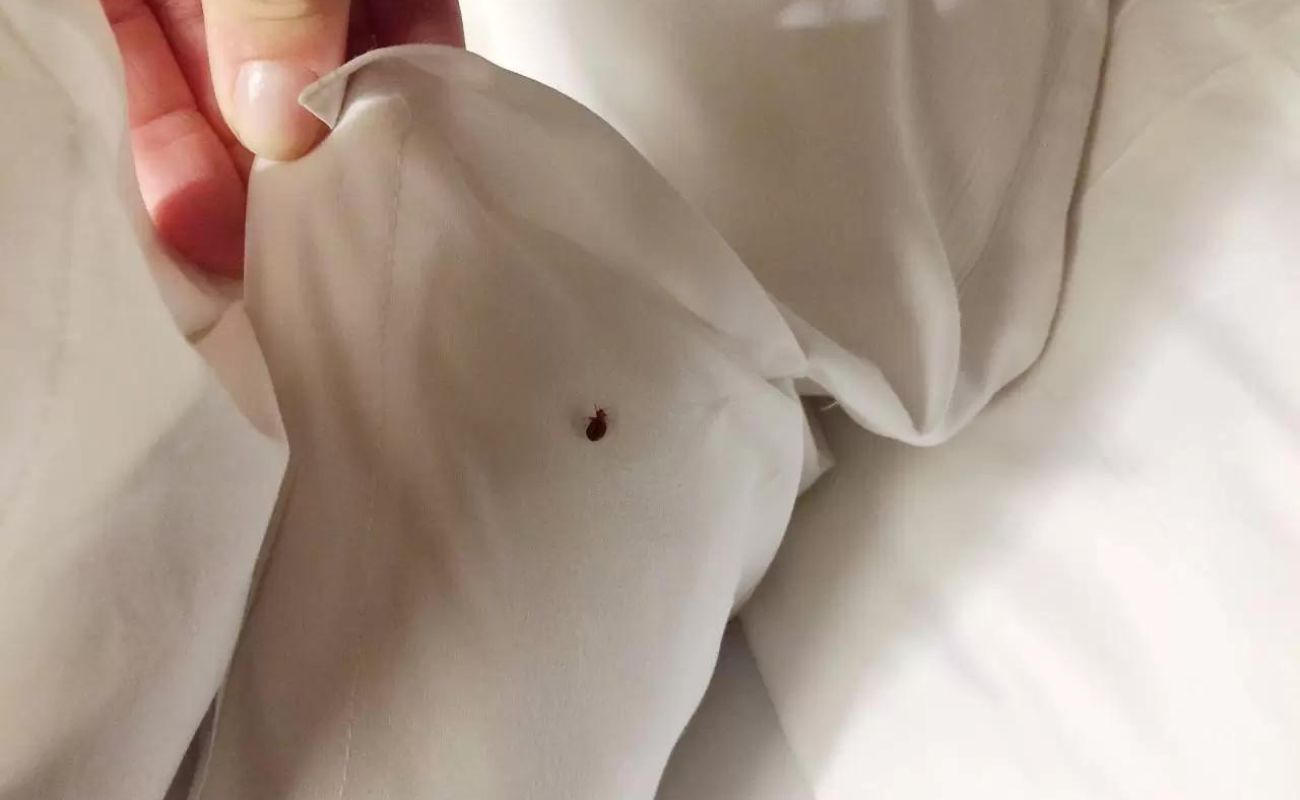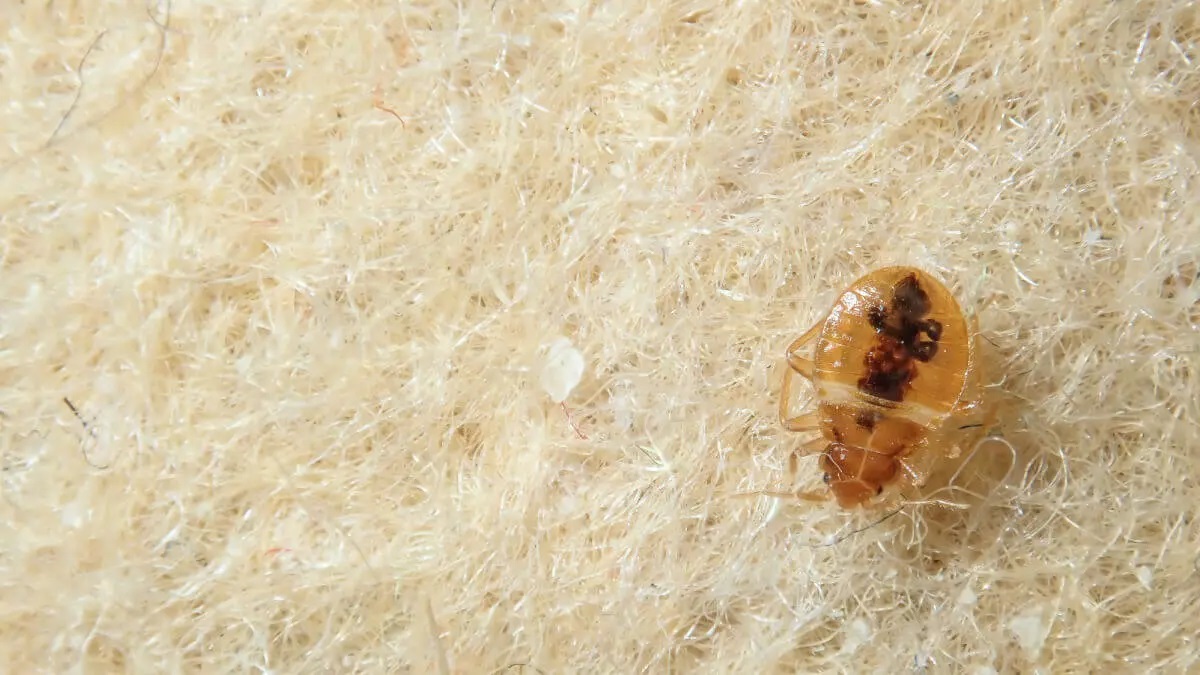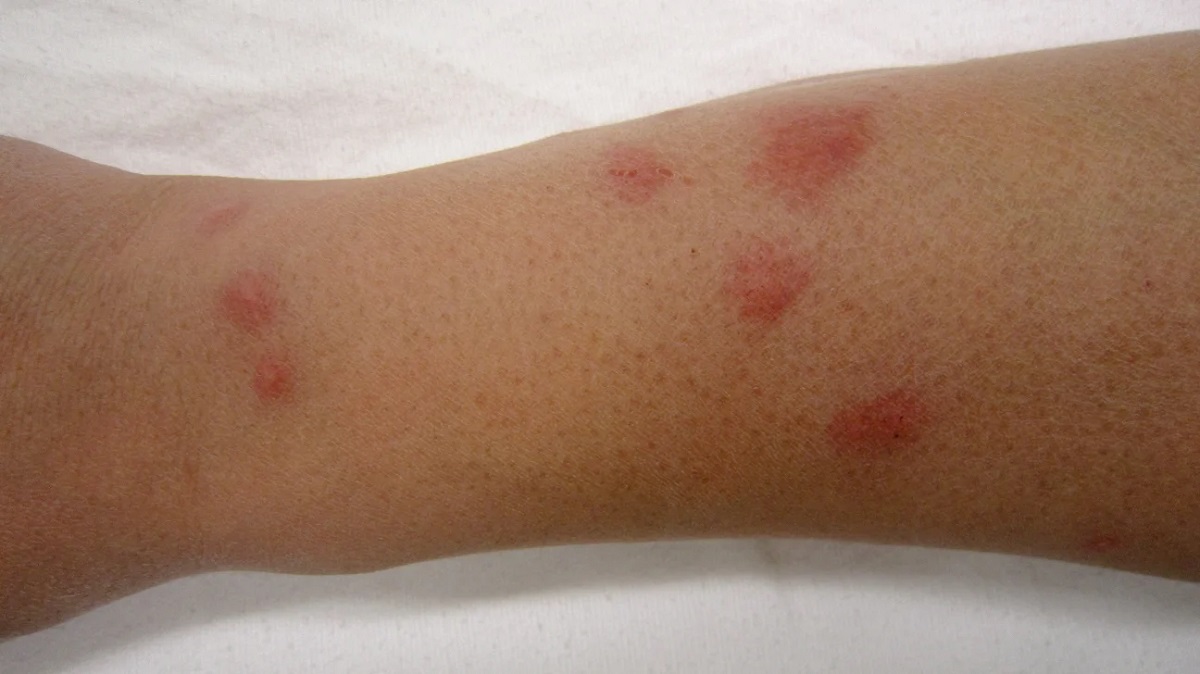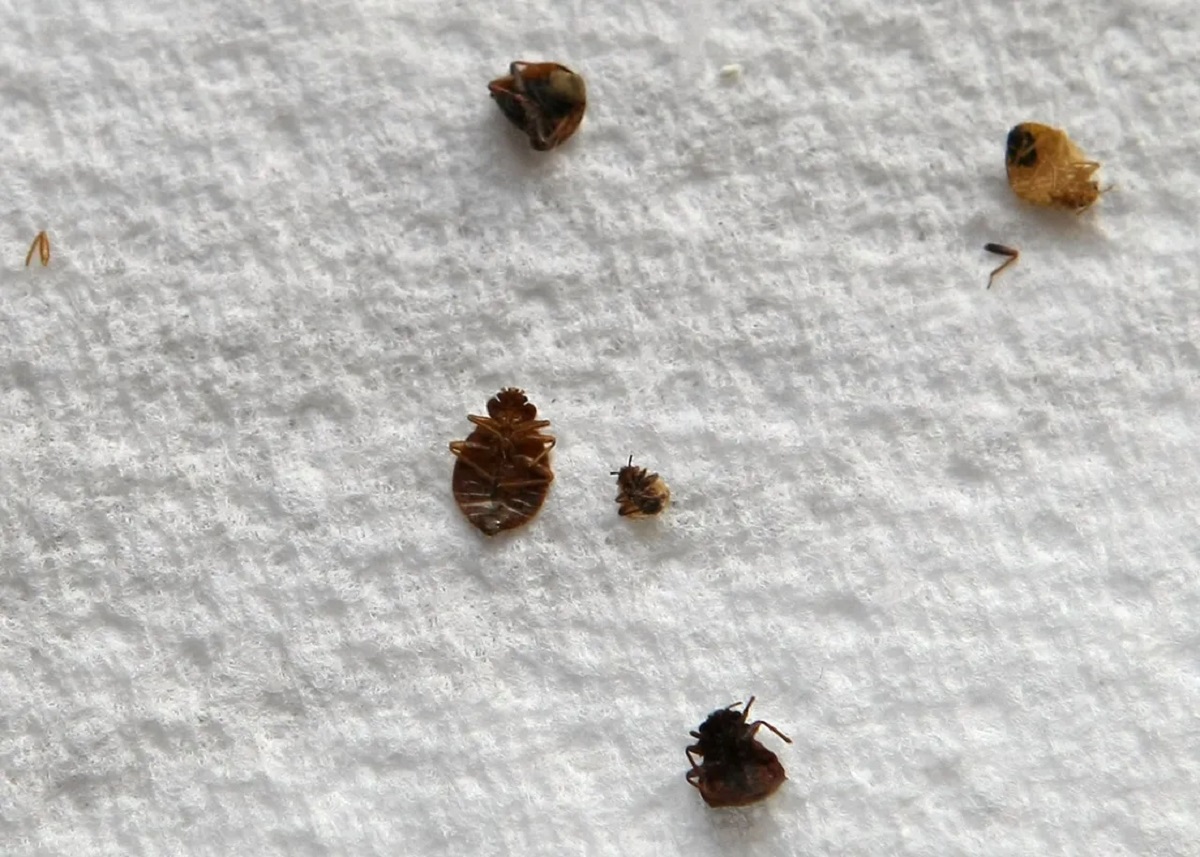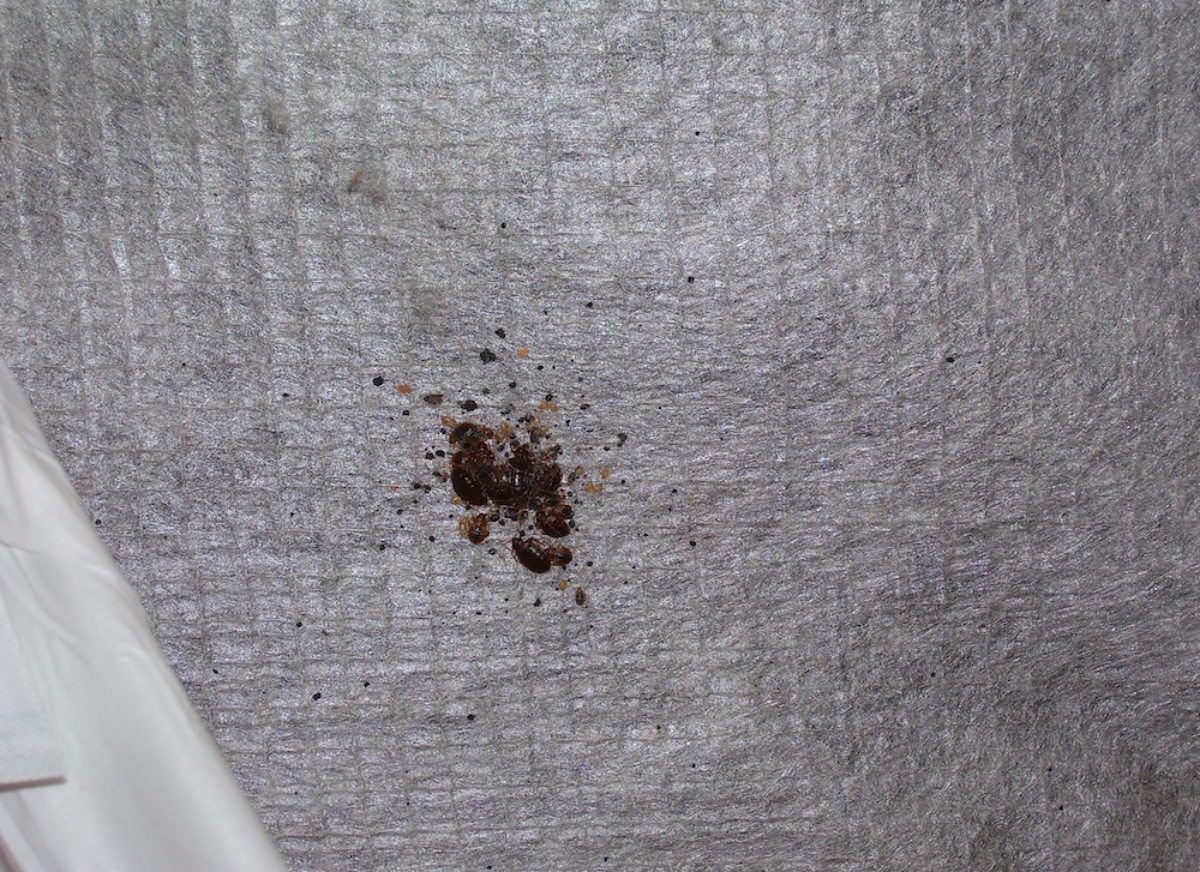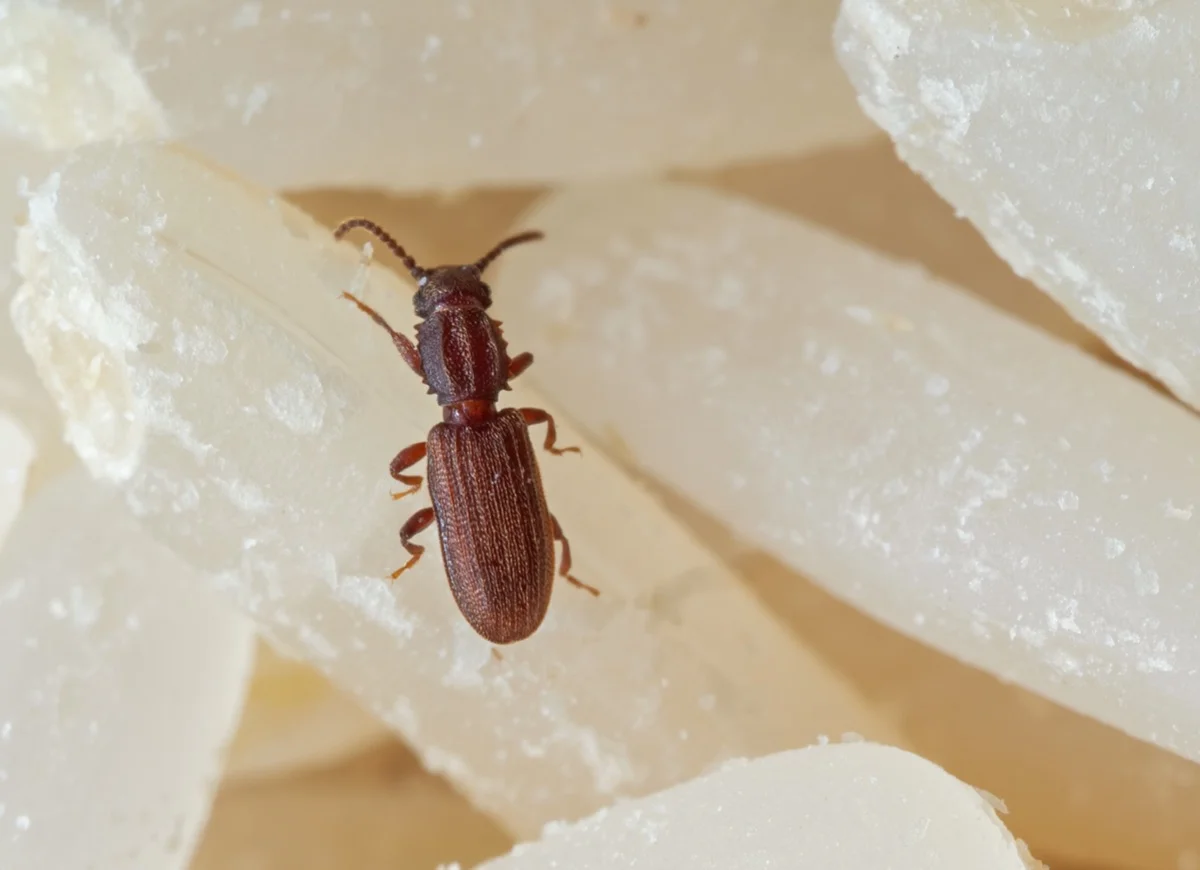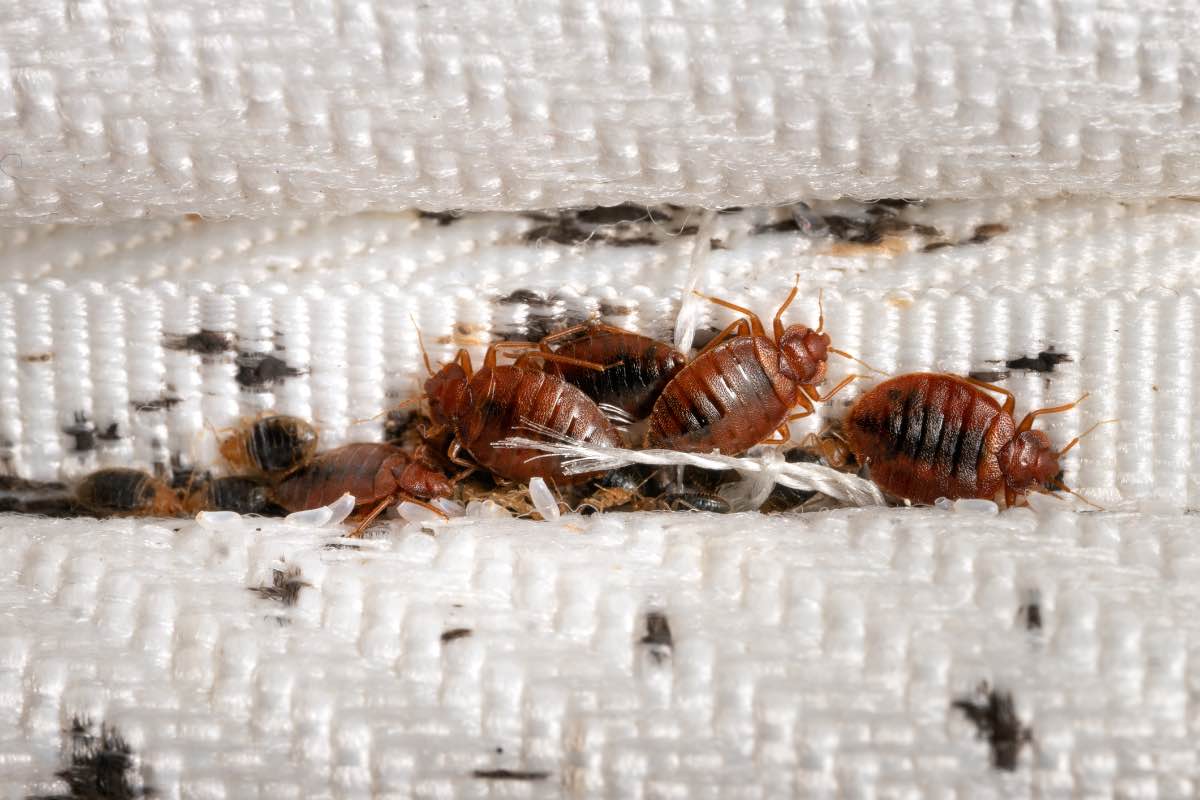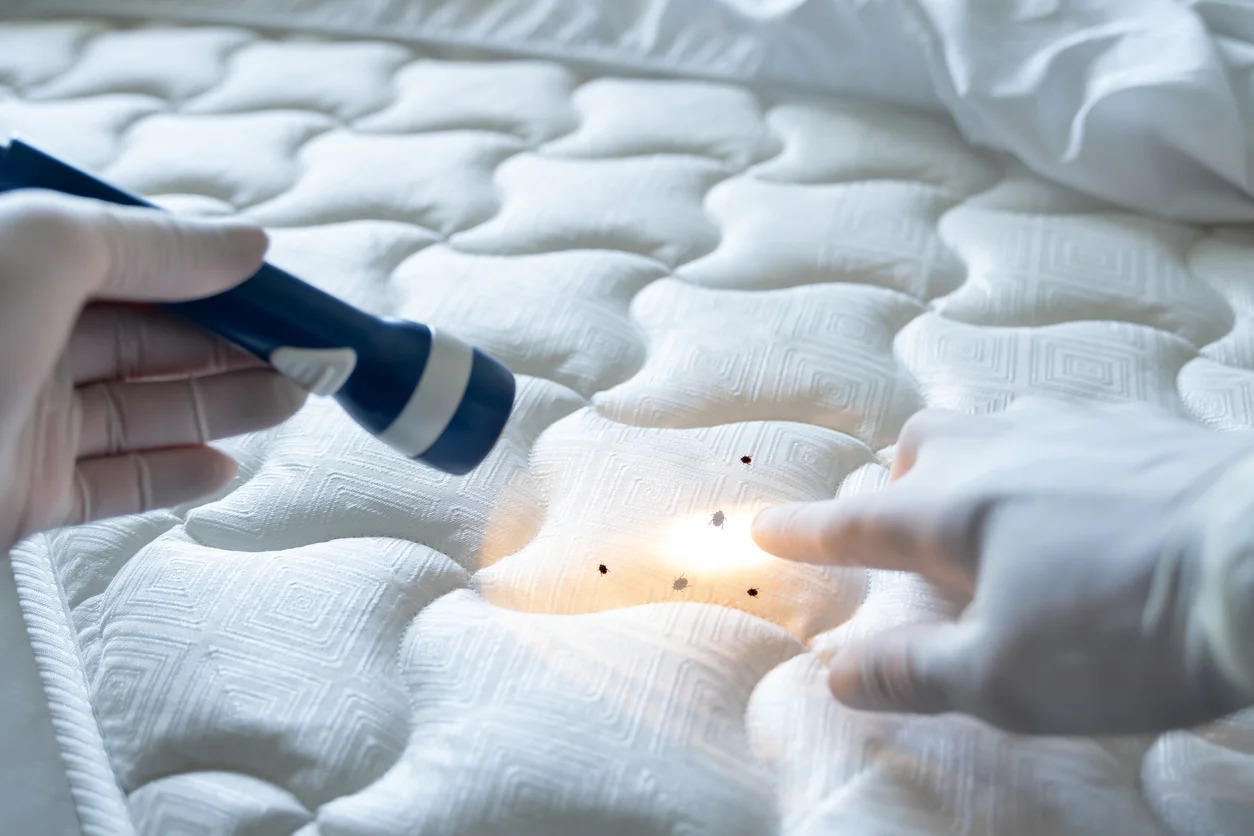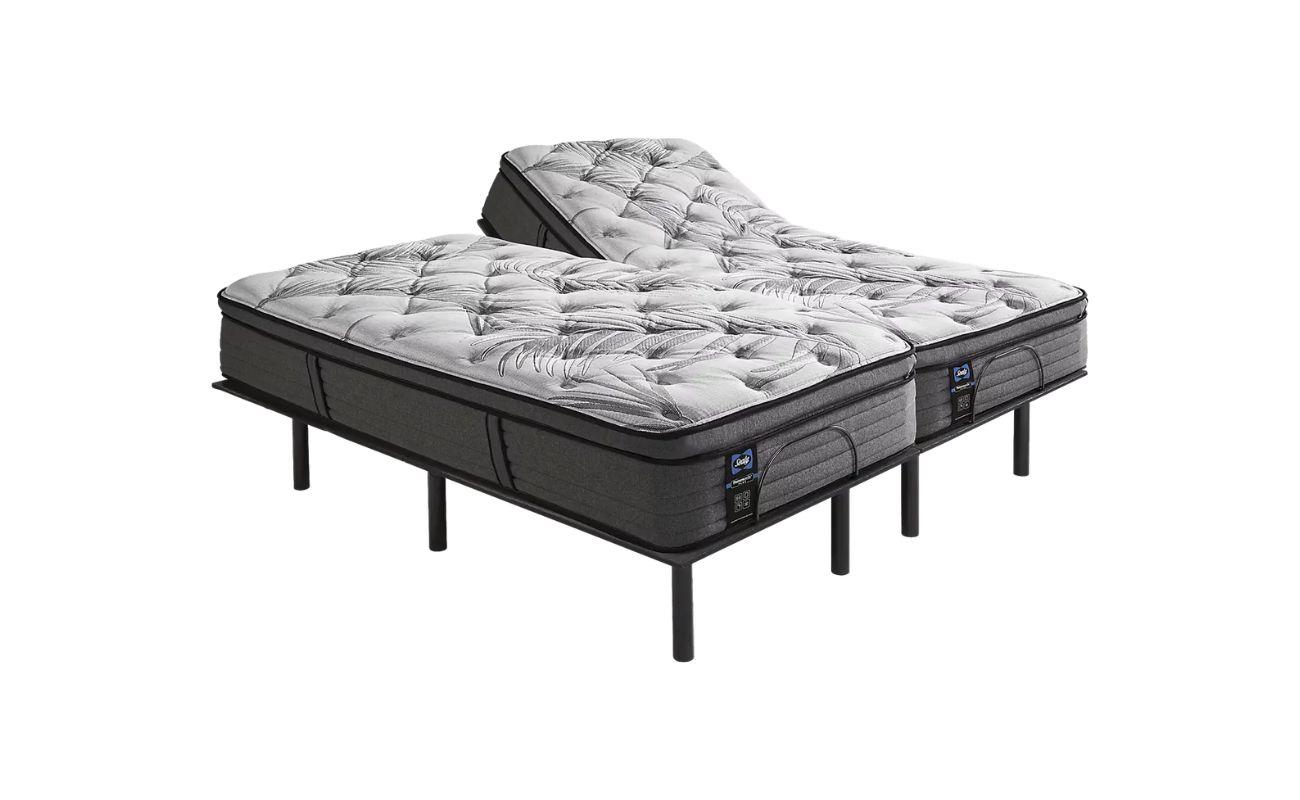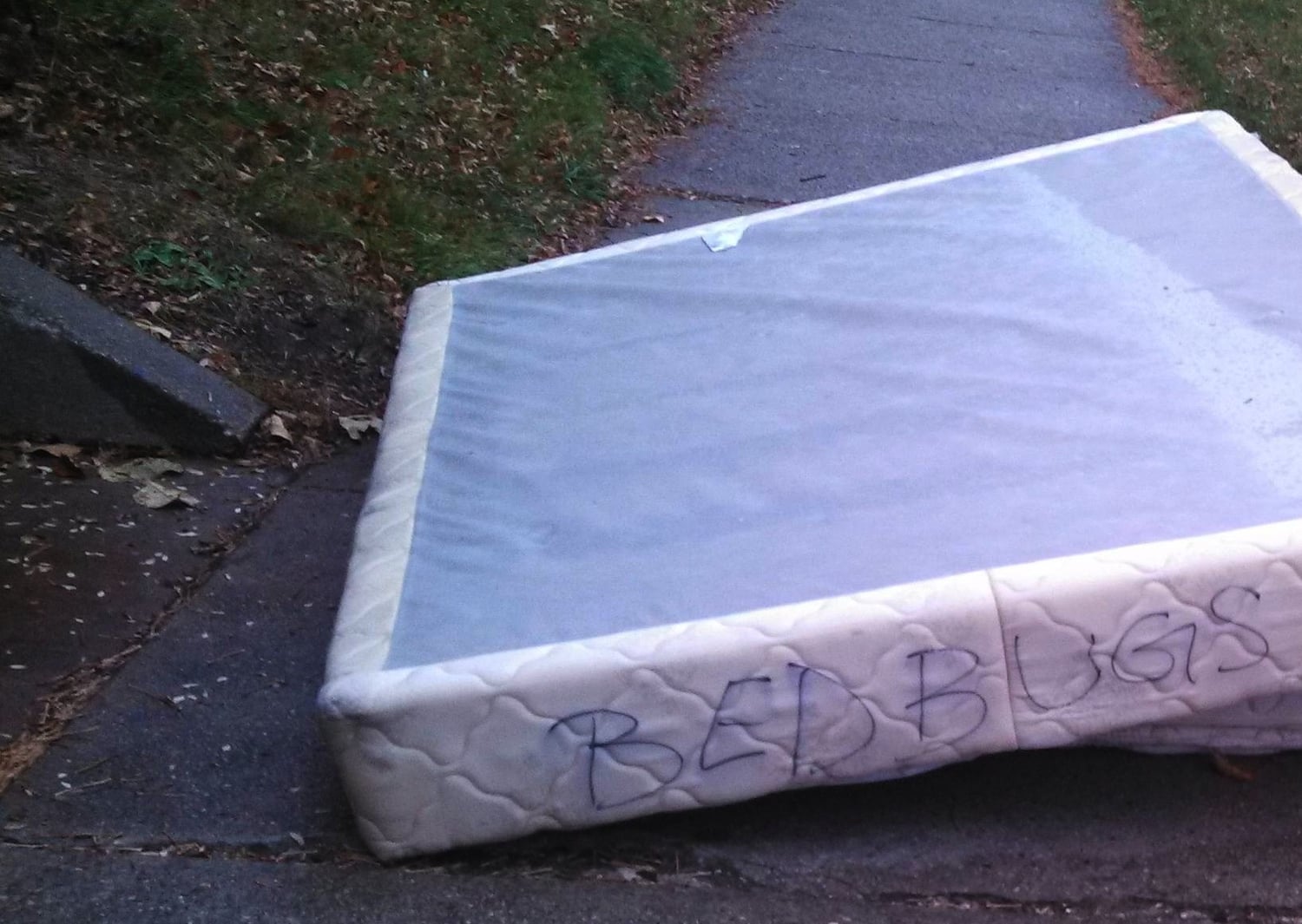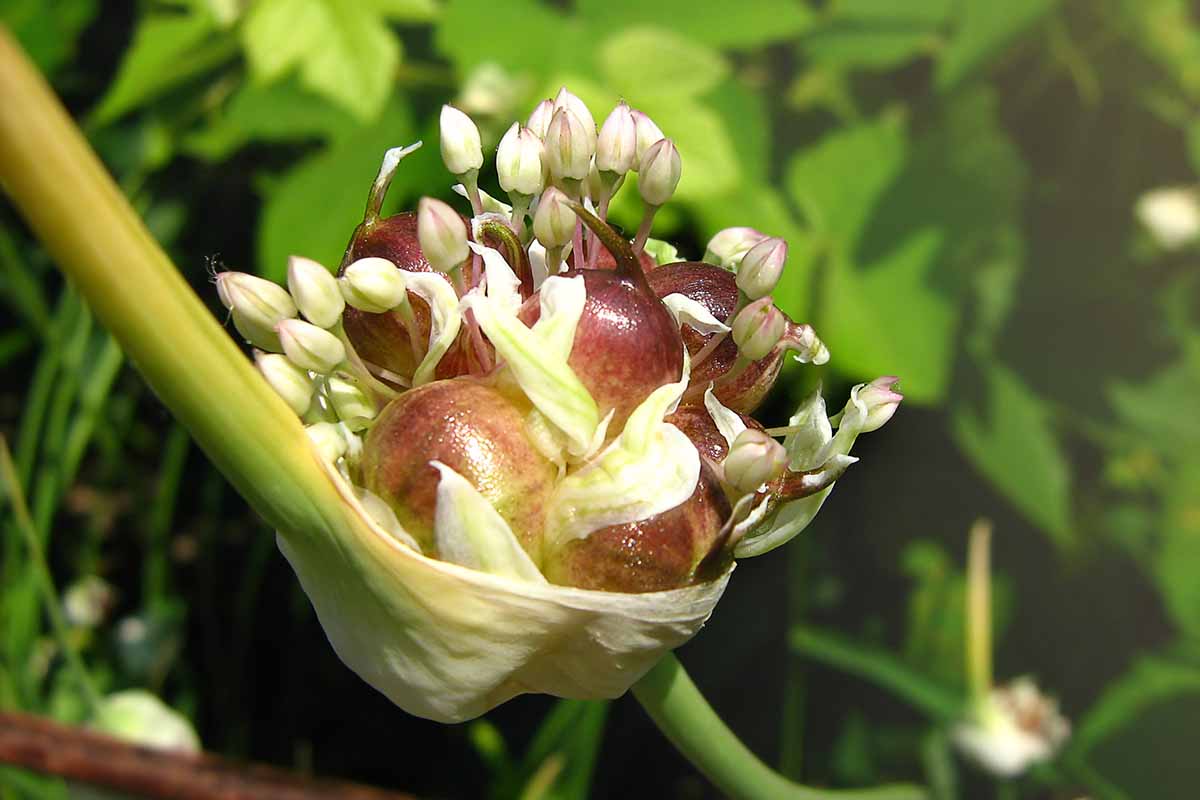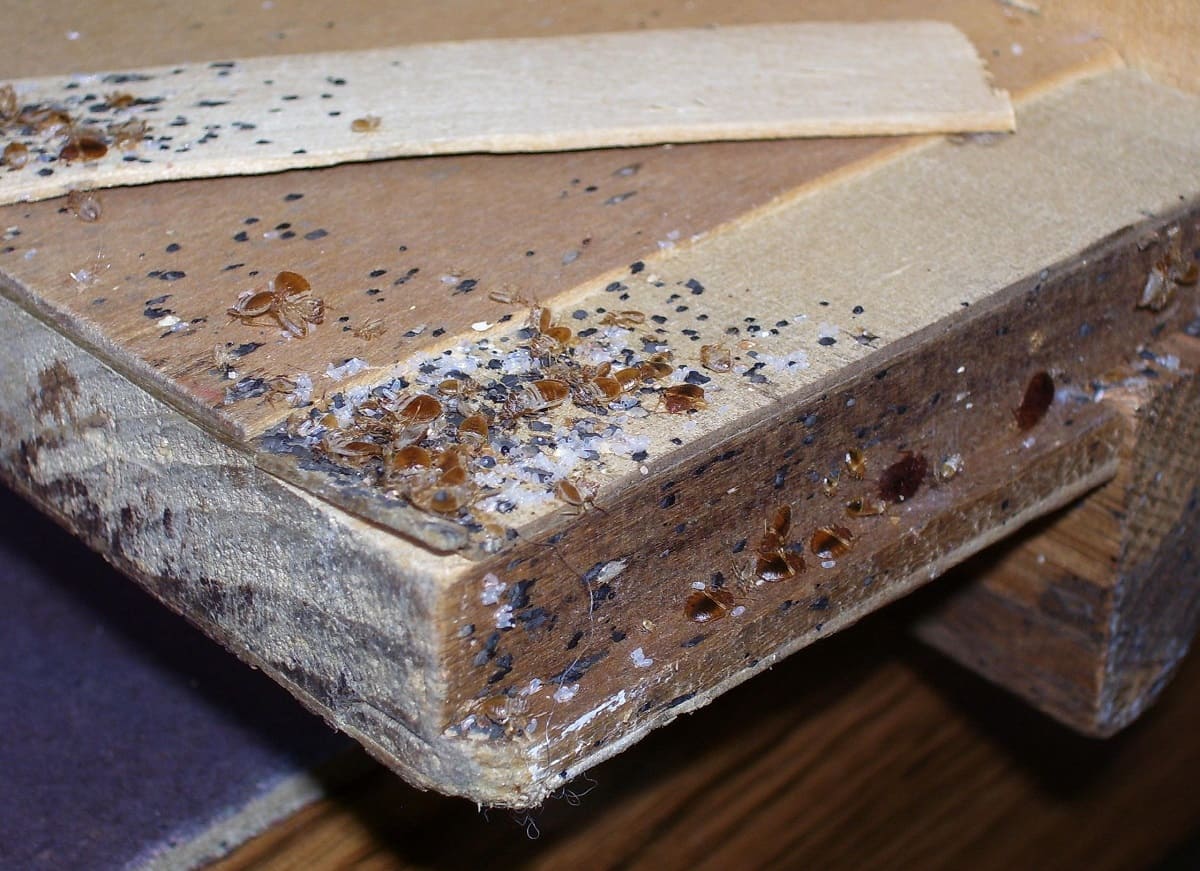Home>Furniture>Bedroom Furniture>What Do Bed Bugs Look Like On A Mattress
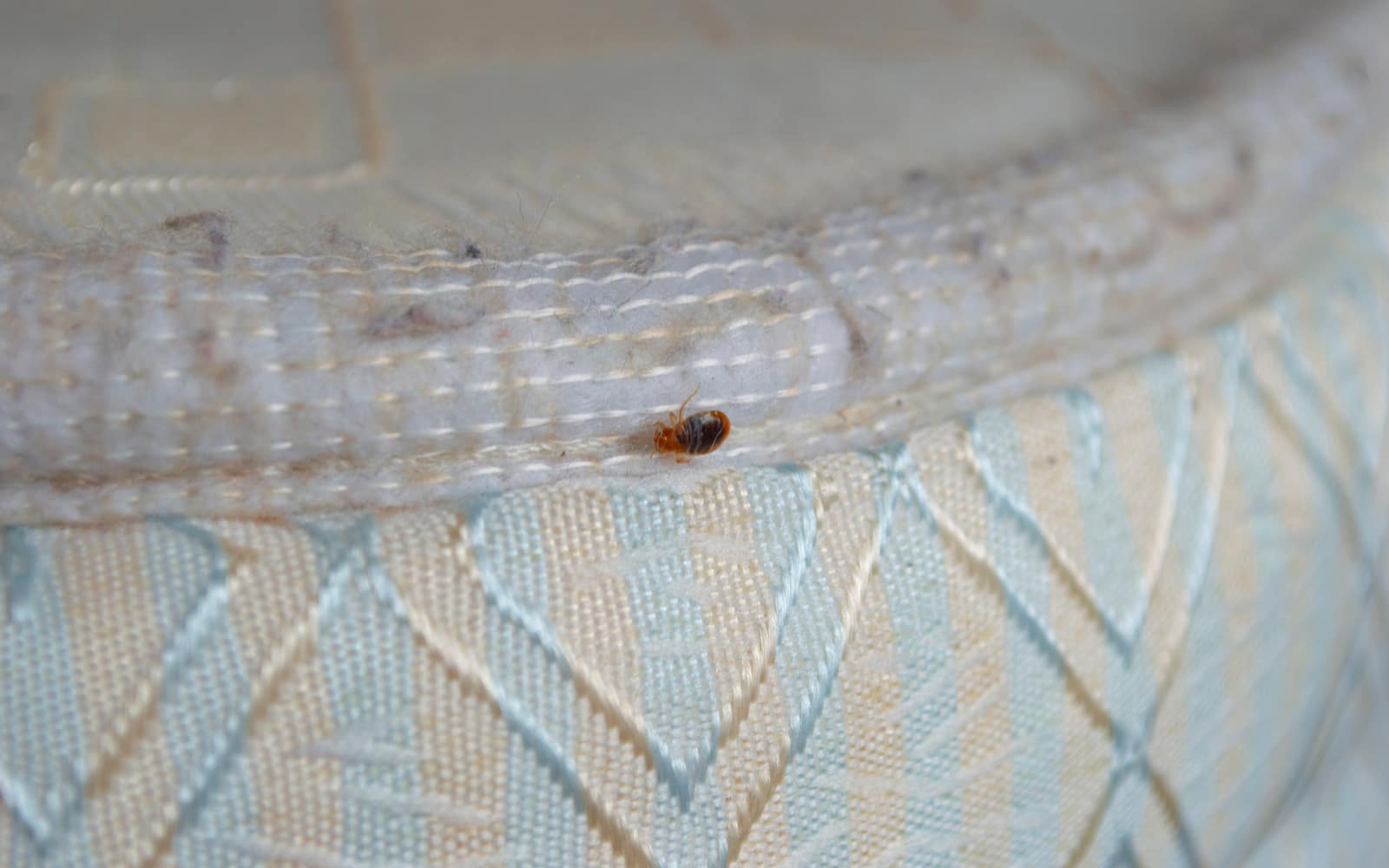

Bedroom Furniture
What Do Bed Bugs Look Like On A Mattress
Modified: May 6, 2024
Discover what bed bugs look like on a mattress. Protect your bedroom furniture from these pesky pests. Learn how to identify and eliminate them.
(Many of the links in this article redirect to a specific reviewed product. Your purchase of these products through affiliate links helps to generate commission for Storables.com, at no extra cost. Learn more)
Introduction
When it comes to creating a comfortable and cozy bedroom, the right furniture can make all the difference. Among the essential pieces in any bedroom is the bed, the literal centerpiece of the room. While we often focus on finding the perfect mattress, sheets, and pillows, there’s another element that often goes unnoticed – the presence of bed bugs. These pesky insects can turn your sanctuary into a nightmare if left untreated.
Bed bugs are small, parasitic insects that feed on human blood. They are extremely elusive and can hide in the tiniest cracks and crevices, making them difficult to spot. One of the most common areas bed bugs infest is the mattress. Understanding how to identify these unwelcome guests and take appropriate measures to prevent and control infestations is essential in maintaining a clean and pest-free sleeping environment.
In this article, we will explore the different ways to identify bed bugs on a mattress, their physical characteristics, signs of infestation, inspection and detection techniques, as well as prevention and control measures you can take to ensure a bed bug-free sleep zone.
Key Takeaways:
- Keep an eye out for small, dark stains, shed exoskeletons, and a musty odor to identify bed bugs on your mattress. Early detection is key to preventing a full-blown infestation.
- Implement preventive measures like mattress encasements, regular cleaning, and heat treatment to safeguard your mattress from bed bugs. Swift action and vigilance can ensure a pest-free sleep environment.
Read more: What Do Bed Bugs On A Mattress Look Like
Identification of Bed Bugs on a Mattress
Identifying bed bugs on a mattress can be challenging, as they are skilled at hiding during the day and coming out to feed at night. However, there are several signs that can indicate their presence.
Firstly, you may notice small, dark stains on your mattress. These stains are the fecal matter left behind by bed bugs after they have fed. They are often found in clusters or streaks and can be easily mistaken for dirt or other stains. Additionally, you may find small spots of blood on your sheets or pillowcases, as bed bugs can accidentally get crushed while feeding.
Another sign to look out for is the presence of shed exoskeletons. Bed bugs go through several molting stages as they grow, and they shed their old exoskeletons during these stages. These discarded shells are often found in the vicinity of their hiding spots, such as mattress seams, cracks in wooden bed frames, or along the edges of headboards.
Live bed bugs can also be found on the mattress. Although they are small and flat, bed bugs are visible to the naked eye. They are about the size of an apple seed and have a reddish-brown color. It is important to note that bed bugs are nocturnal insects and tend to feed on their hosts during the night, so they may retreat to their hiding spots during the day.
Lastly, you may also notice a distinct musty odor in your bedroom. Bed bugs release pheromones, which can give off a sweet, sickly scent. This odor is often more noticeable in severe infestations, but it is worth keeping an eye (or nose) out for if you suspect bed bugs on your mattress.
Now that we have covered how to identify bed bugs on a mattress, let’s explore their physical characteristics in more detail.
Physical Characteristics of Bed Bugs
Understanding the physical characteristics of bed bugs can help you better identify and differentiate them from other insects. While they may be small, they have some distinct features that set them apart.
Bed bugs have an oval-shaped body, which is flat and about the size of an apple seed. Their color can vary depending on their age and whether they have recently fed. Adult bed bugs are typically reddish-brown, while younger nymphs are lighter in color and may appear more translucent.
One of the key features of bed bugs is their ability to hide in tight spaces. They have a thin, flat body that allows them to squeeze into tiny cracks and crevices, making them particularly adept at hiding in and around mattresses. Their bodies are also equipped with small, fine hairs that give them a velvety appearance.
Bed bugs have six legs and two antennae, which they use for sensory perception. Their legs are positioned near the front of their body, allowing them to move quickly across surfaces. Although they do have wings, bed bugs are unable to fly. They rely solely on crawling and hitchhiking to move from one location to another.
When bed bugs bite, they inject their mouthparts into the skin of their host to extract blood. Their mouthparts are designed to pierce the skin and have a tube-like structure called a proboscis, which they use to suck up blood. After a blood meal, their bodies become engorged and their color may change to a darker, reddish hue.
It’s important to note that proper identification of bed bugs is crucial to effective treatment and control. If you suspect that you have bed bugs in your mattress, it’s recommended to consult a professional pest control expert for confirmation and assistance.
Now that we have a clear understanding of the physical characteristics of bed bugs, let’s move on to the signs of infestation on mattresses.
Signs of Bed Bug Infestation on Mattresses
When it comes to identifying a bed bug infestation on a mattress, there are several telltale signs to look out for. These signs can help you determine whether your mattress is harboring these unwelcome guests.
One of the most common signs of a bed bug infestation is the presence of small dark stains on your mattress. These stains are the fecal matter left behind by bed bugs after they have fed on blood. You may find these stains in clusters or streaks, particularly in the areas where the bed bugs are hiding, such as along the seams of the mattress or in the crevices of the bed frame.
Another sign to watch for is the appearance of small spots or smears of blood on your sheets, pillowcases, or mattress cover. These marks are the result of a bed bug getting crushed or disrupted while feeding. They can often be found near the areas where the bed bugs are feeding or hiding.
In addition to stains, you may also notice the presence of shed exoskeletons on your mattress. As bed bugs go through molting stages, they shed their old exoskeletons. These discarded shells are often found near their hiding spots, such as in the folds of the mattress or along the edges of the bed frame. The presence of shed exoskeletons is a strong indication of an active infestation.
Live bed bugs themselves may also be visible on the mattress. These nocturnal pests are about the size of an apple seed and have a reddish-brown color. They tend to hide during the day and come out to feed at night, so it may be easier to spot them in the early morning hours. Look for them in the seams, crevices, and tufts of the mattress, as well as in the surrounding areas.
Lastly, if you notice a distinctive musty odor in your bedroom, it could be a sign of a severe bed bug infestation. Bed bugs release pheromones, which can give off a sweet, sickly scent. This odor is often more noticeable in advanced infestations and may require professional intervention to address.
If you observe any of these signs on your mattress, it is important to take immediate action to prevent the infestation from spreading further. Now, let’s explore some inspection and detection techniques you can use to confirm the presence of bed bugs on your mattress.
Inspect your mattress regularly for small, reddish-brown bugs, dark spots, or shed skins. Bed bugs are about the size of an apple seed and can be found in mattress seams and crevices.
Inspection and Detection Techniques
When it comes to inspecting and detecting bed bugs on a mattress, a thorough and systematic approach is essential. Here are some techniques you can use to confirm the presence of bed bugs:
- Visual Inspection: Carefully examine the seams, folds, and tufts of your mattress. Use a flashlight to illuminate dark areas and look for any signs of bed bugs, such as live bugs, shed exoskeletons, or dark stains. Pay close attention to the headboard, bed frame, and nearby furniture, as bed bugs may also hide in these areas.
- Bed Bug Mattress Encasements: Consider using specialized mattress encasements that are designed to prevent bed bugs from infesting your mattress. These encasements are made of a tightly woven fabric that bed bugs cannot penetrate. They act as a barrier, trapping any existing bed bugs inside, and preventing new ones from infesting your mattress.
- Interception Devices: Place interceptors or bed bug traps beneath the legs of your bed frame. These devices are designed to capture crawling bed bugs and prevent them from reaching your mattress. They can be helpful in both monitoring and trapping bed bugs for identification.
- K9 Inspection: Consult a professional pest control company that offers canine bed bug inspections. Specially trained dogs can detect the presence of bed bugs with a high level of accuracy. Their keen sense of smell can identify even hidden infestations, making them a valuable tool in the detection process.
- Consulting a Professional: If you are unable to confirm the presence of bed bugs using the above techniques or if the infestation seems severe, it may be best to seek professional help. Pest control experts have the knowledge and tools to accurately identify and treat bed bug infestations, ensuring effective control and eradication.
Remember, early detection is key to preventing the spread of bed bugs and minimizing the impact on your home. Regular inspection and vigilance can help you catch an infestation before it becomes a full-blown problem. Next, we will explore prevention and control measures you can take to safeguard your mattress from bed bugs.
Read more: What Do Bed Bugs Look Like In A Mattress
Prevention and Control Measures
Preventing and controlling bed bugs on your mattress requires a comprehensive approach that combines proactive measures and effective treatment methods. Here are some preventive and control measures you can take:
- Mattress Encasements: Use mattress encasements that are specifically designed to be bed bug-proof. These encasements should fully enclose your mattress and box spring, creating a barrier that prevents bed bugs from entering or escaping. Make sure to choose encasements with a durable fabric and tight zipper closure.
- Regular Cleaning and Vacuuming: Maintain a clean and clutter-free bedroom. Vacuum your mattress, bed frame, and surrounding areas regularly to remove any bed bugs or eggs that may be present. Remember to empty the vacuum immediately after each use and dispose of the contents in a sealed bag to prevent bed bugs from escaping.
- Sealing Cracks and Crevices: Inspect and seal any cracks, crevices, or gaps in your bedroom, especially near the bed area. Bed bugs can hide in these tiny spaces, so sealing them off will limit their hiding spots and make it more difficult for them to infest your mattress.
- Reduce Clutter: Eliminate clutter in your bedroom as much as possible. Bed bugs thrive in cluttered environments as it provides them with more hiding places. Decluttering will not only make it easier to spot bed bugs, but it will also make treatment more effective.
- Be Cautious When Traveling: When traveling, inspect your accommodation for any signs of bed bugs. Check the mattress, headboard, and furniture thoroughly before unpacking. Avoid placing your luggage directly on the bed or floor, instead, use luggage stands or bathroom counters.
- Heat Treatment: Bed bugs are highly sensitive to heat, so exposing your mattress and bedding to high temperatures can be an effective treatment method. You can use a clothes dryer on a high setting or steam cleaning equipment to kill bed bugs and their eggs. However, it is crucial to follow the manufacturer’s instructions and safety precautions.
- Professional Pest Control: If your efforts to prevent and control bed bugs on your mattress are not successful, it is advisable to seek help from a professional pest control company. They have the expertise and specialized equipment to eliminate bed bug infestations effectively.
By implementing these prevention and control measures, you can reduce the risk of bed bug infestations on your mattress and create a healthier sleeping environment. It is essential to address the issue promptly to prevent the spread of bed bugs to other areas of your home. Let’s wrap up our discussion.
Conclusion
Bed bugs are unwanted guests that can turn your mattress into a breeding ground if left unchecked. Identifying and addressing bed bug infestations on your mattress is essential for maintaining a clean and pest-free bedroom.
In this article, we explored the different ways to identify bed bugs on a mattress, including looking for stains, shed exoskeletons, live bugs, and noticing a distinct odor. We also discussed the physical characteristics of bed bugs, such as their small size, reddish-brown color, and their ability to hide in tight spaces.
Additionally, we covered the signs of bed bug infestation on mattresses, including stains, blood spots, shed exoskeletons, and the presence of live bed bugs. We also discussed various inspection and detection techniques, such as visual inspections, the use of bed bug mattress encasements, interception devices, canine inspections, and the importance of consulting professionals for severe infestations.
Furthermore, we provided preventive measures to help you protect your mattress from bed bugs. These measures include using mattress encasements, regular cleaning and vacuuming, sealing cracks and crevices, reducing clutter, and being cautious when traveling. We also mentioned heat treatment as an effective method and highlighted the importance of seeking professional pest control assistance when necessary.
Remember, early detection and swift action are vital in preventing the spread of bed bugs and minimizing their impact on your sleep environment. By incorporating these preventive measures and promptly addressing any signs of infestation, you can rest assured, knowing that your mattress is free from these unwanted pests.
So, take the necessary steps to protect your mattress and maintain a bed bug-free bedroom. Your peaceful sleep and overall well-being are worth the effort. Sweet dreams!
Now that you're armed with knowledge about spotting bed bugs on mattresses, consider the other unwelcome guests lurking in your home. Like bed bugs, pantry moths can be a nuisance, silently wreaking havoc in your kitchen. Dealing with these pests requires a different set of strategies. For those struggling with pantry moths, our expert guide on effective pest control measures offers practical tips and insights to ensure your pantry remains pest-free.
Frequently Asked Questions about What Do Bed Bugs Look Like On A Mattress
Was this page helpful?
At Storables.com, we guarantee accurate and reliable information. Our content, validated by Expert Board Contributors, is crafted following stringent Editorial Policies. We're committed to providing you with well-researched, expert-backed insights for all your informational needs.
